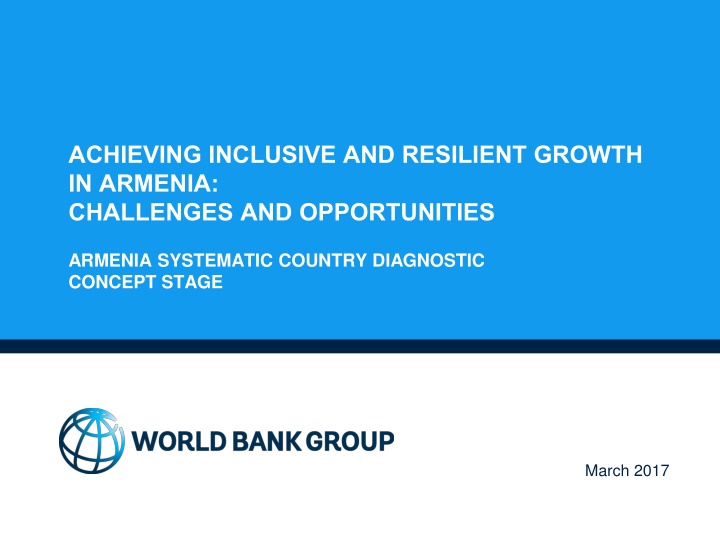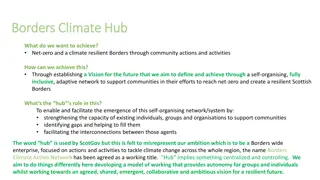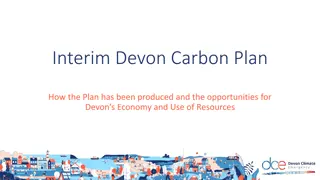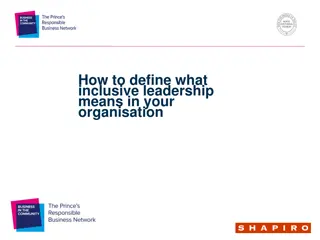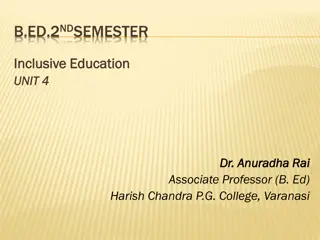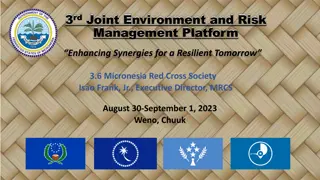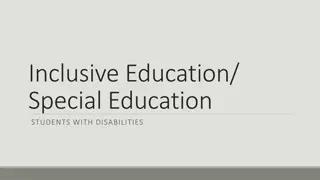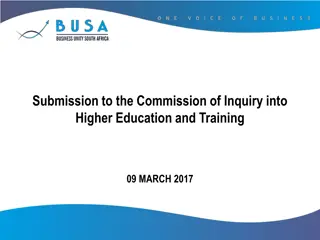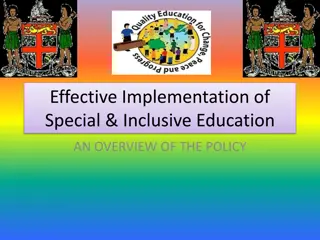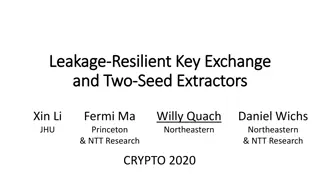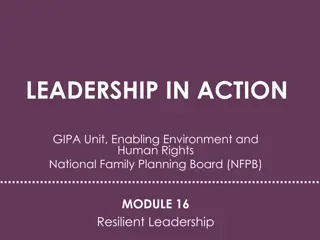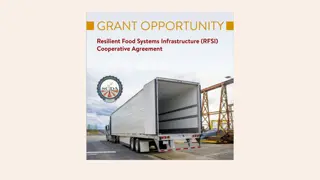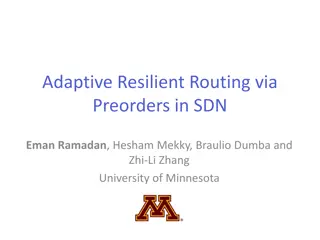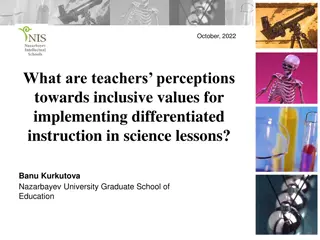ACHIEVING INCLUSIVE AND RESILIENT GROWTH IN ARMENIA: CHALLENGES AND OPPORTUNITIES
This report explores the challenges and opportunities for achieving inclusive and resilient growth in Armenia. It provides a systematic country diagnostic concept, highlighting key areas for development. The analysis, conducted in March 2017, offers valuable insights for policymakers and stakeholders interested in Armenia's economic and social growth.
Download Presentation

Please find below an Image/Link to download the presentation.
The content on the website is provided AS IS for your information and personal use only. It may not be sold, licensed, or shared on other websites without obtaining consent from the author.If you encounter any issues during the download, it is possible that the publisher has removed the file from their server.
You are allowed to download the files provided on this website for personal or commercial use, subject to the condition that they are used lawfully. All files are the property of their respective owners.
The content on the website is provided AS IS for your information and personal use only. It may not be sold, licensed, or shared on other websites without obtaining consent from the author.
E N D
Presentation Transcript
ACHIEVING INCLUSIVE AND RESILIENT GROWTH IN ARMENIA: CHALLENGES AND OPPORTUNITIES ARMENIA SYSTEMATIC COUNTRY DIAGNOSTIC CONCEPT STAGE March 2017
What is a Systematic Country Diagnostic? Identify key challenges and opportunities for country to accelerate progress in poverty reduction and shared prosperity (the World Bank Group Twin goals) in a sustainable way Diagnose Available analyses Data New analyses Gather Evidence What are the key priorities? Challenges Opportunities Identify Priorities Conducted upstream of country partnership framework (CPF) to inform strategic discussions with client countries and not limited to areas of engagement for WBG in the country Diagnostic is NOT about what projects or programs the WBG could or will support in the future. That will come later in when the CPF is prepared. 2
ARMENIA SYSTEMATIC COUNTRY DIAGNOSTIC CONCEPT STAGE
Outline 1. Context and progress towards the twin goals 2. Looking Ahead: SCD Objectives and Key Questions 3. Reigniting sustained and inclusive growth: What are the key hypotheses the SCD will examine? 4. Approach 5. Timeline 4
1. Context and progress towards the twin goals Until 2008, Armenia featured as one of the pre-eminent reformer among the former Soviet Republics . Since 2008, radically different and challenging circumstances, with a low growth-low investment environment and stalled poverty reduction 60 per capita GDP growth 50 poverty headcount 40 30 20 10 0 2004 2005 2006 2007 2008 2009 2010 2011 2012 2013 2014 2015 -10 Construction sector collapsed, weakening remittance inflows, recession in main trading partner, contracting private consumption FDI led, nontradable sectors, construction, high remittance flows -20 5
Context Small and landlocked within a troubled neighborhood Closed borders with Azerbaijan and Turkey, Georgia is the only regional and international trade opening) route (Iran s Demographic challenges - shrinking and aging population Social challenges - opportunity and equity gaps between women and men, girls and boys Environmental/natural disaster risks Lagging critical reforms implementation of some Country is multi-connected via trade, financial flows, ICT, migration, and diaspora Armenia could graduate to UPPER middle income category in about 5 years 6
Progress towards poverty reduction and shared prosperity Spatial Differences in Poverty Rates in Armenia (% poor): Secondary Cities have the highest poverty rate 50 Poverty reduction gains by and large before 2009, stagnation since. 40 30 20 Spatial differences capital city, secondary cities, rural areas. 10 0 Shared prosperity gains by and large before 2009; consumption of the poorest 40 percent barely grew since 2009. 2008 2009 2010 2011 2012 2013 2014 2015 Rural areas Secondary cities Yerevan Shared prosperity in Armenia (consumption growth) 5.61% 3.20% 2.42% 2.17% 2.15% 1.89% 1.87% 1.61% 0.85% 2004-2009 2009 - 2014 2004-2014 Bottom 40 percent Top 60 percent ALL 7
What have been the drivers of poverty reduction? Employment rate, labor and agriculture income, pensions are key drivers of poverty reduction. Remittances are driver of poverty reduction outside Yerevan. Drivers have changed in importance after the 2009 crisis for secondary cities: waning impact of labor income and growing importance of pensions and remittances for rural areas: greater importance of labor income, agriculture income and employment; remittances impact declined for Yerevan: labor income, employment and pension have become more important Yerevan Total change in poverty Per capita remittances income Per capita asset income Per capita public transfer income Per capita private transfer income Per capita pension income Per capita agriculture income Labor income per employed adult Employment rate Dependency rate -15 -10 -5 0 5 Poverty change b/w 2004-2007 Poverty change b/w 2010-2015 Secondary Cities Rural areas Total change in poverty Total change in poverty Per capita remittances income Per capita remittances income Per capita asset income Per capita asset income Per capita public transfer income Per capita public transfer income Per capita private transfer income Per capita private transfer income Per capita pension income Per capita pension income Per capita agriculture income Per capita agriculture income Labor income per employed adult Labor income per employed adult Employment rate Employment rate Dependency rate Dependency rate -15 -10 -5 0 5 -15 -13 -11 -9 -7 -5 -3 -1 1 Poverty change b/w 2004-2007 Poverty change b/w 2010-2015 Poverty change b/w 2004-2007 Poverty change b/w 2010-2015 Source: ILCS data for 2004, 2007 and 2015. Note: Based on micro-decomposition of poverty change, negative numbers indicate that the factor helped to reduce poverty, positive numbers indicate the opposite effect (World Bank staff calculations). 8
2. Looking Ahead: SCD Objectives and Key Questions SCD Objective: to formulate forward looking options for fostering inclusive and sustainable growth in Armenia to support poverty reduction and shared prosperity With a focus on ensuring greater equality of opportunity for women and men, girls and boys Can Armenia continue to rely on the past development model to achieve sustainable growth with poverty reduction and shared prosperity? Global external environment has changed drastically (low commodity prices, low investment/liquidities) Past drivers of growth have run their course (transition gains from structural opening/catching up and first generation reforms) What could be the key enabling conditions to reignite economic growth that is both inclusive and resilient? Inclusive growth as a growth process where equal opportunities are provided to economic participants and benefit all. Special focus women opportunity to find good jobs Resilient growth means building macroeconomic buffers over time, protecting the most vulnerable segments of the population with safety nets and managing natural and environmental assets sustainably. 9
Four hypotheses to be examined in SCD 1. Armenia needs a new growth model and drivers of growth to adapt to its new circumstances 2. Supporting firms productivity and a vibrant private sector crucial for economic growth 3. Investing in productive individuals will be key for inclusive growth 4. Building national resilience to vulnerabilities will bring sustainable growth 11
Hypothesis 1: A new growth model and new drivers of growth Prior to 2009, Armenia experienced a double Dutch Disease (currency appreciation with inflows (FDI, ODA, exports). Growth by sectors 12 high financial remittances, Net indirect taxes 10 Agriculture percentage points 8 Industry 6 After 2009 and an abrupt stop of financial inflows, sluggish growth. Construction 4 2 Services 0 GDP (at market prices) 2000-2008 2010-2015 -2 Growth decomposition by factors Growth by expenditures Labor 15 14 12 Private consumption non-ICT Capital 10 percentage pointsd 10 8 Public consumption ICT Capital 6 5 TFP 4 Gross Investment 2 GDP Growth (RHS) Net Exports of G&S 0 0 2000-2008 2010-2015 2000-2008 2010-2015 -2 GDP at market prices -5 12
Lack of trade integration less open than its peers (exports of goods and services 30% of GDP), more landlocked with two closed borders, ranked 141 among 160 economies worldwide in 2016 Logistic Performance Index, only half of the road network (excluding urban) is in good or fair condition, low high-speed broadband penetration, high prices. Exports of goods and services (% of GDP) 50 45 40 35 32 30 2930 30 29 29 28 28 25 25 24 23 23 21 20 Armenia 19 15 15 15 Georgia 10 Europe & Central Asia 5 0 13
What will it take for new growth drivers to emerge and be sustained? What are the existing positive drivers? What can we learn from them? How can they be accelerated and applied elsewhere in the economy? Dynamism and resilience in the agriculture sector. Success story of small but fast-growing IT industry Recent growth rebalancing from consumption to exports and increasing diversification of export destinations Active and entrepreneurial diaspora Prospects of Armenian mining and metals? Possible re-integration of Iran and transit corridor between Iran and Russia/Europe. How can Armenia rebalance its growth model from domestic drivers (consumption, non-tradable) to exports and tradable? Growth analysis and scenarios How much is Armenia connected to the rest of the World? What policies /regulations are hindering the development of exports commensurate with Armenia s particular endowments? What can be done to support a multi-connectivity agenda for Armenia to tap into regional and global markets? Trade, Trade and Transport facilitation analyses with regional and global value chains Trade in services Multi-connectivity angle (ICT, diaspora) Trade integration agreements (EEU) 14
Hypothesis 2: Supporting productive firms and a vibrant private sector Firm-level productivity characteristics*: Heterogeneity: A large number of relatively efficient firms coexist alongside significantly less efficient competitors The policy environment in Armenia has a larger impact on firm-level productivity than in other countries in the region. Among policy factors the overall quality of governance and the availability of skilled labor have the largest impact on firm-level productivity. Export propensity is positively correlated with access to finance, higher rates of ICT use, increased importing activity, access to infrastructure and productivity. Foreign-owned firms employ more highly skilled labor and are more productive. * source: World Bank (2015) Drivers of Dynamisms Country Economic Memorandum 15
Investment climate Armenia investment climate lags behind Powerful business groups with interests cutting across sectors influence policymaking and prevent new market entrants. Lack of market contestability in sectors providing important production inputs (utilities, internet connectivity) hinder the emergence of a dynamic export-oriented private sector. Doing Business 2016 World Competitiveness Index 2016 Subindex A: Basic requirements 7 Innovation Institutions 6 Business sophistication 5 Infrastructure 4 Subindex C: Innovation and sophistication 3 Macroeconomic environment 2 1 0 Health and primary education Market size Subindex B: Efficiency enhancers Technological readiness Financial market development Higher education and training Labor market efficiency Goods market efficiency Armenia -4.1 Georgia - 4.3 Estonia - 4.8 16
What will it take for Armenias private sector to strive and export to the world? What are the top constraints to firm productivity? How can firm productivity be enhanced? Measurement and comparison of Armenia firm-level productivity Determinants of firm productivity, firm and product survival, entry, exit Main constraint to firm productivity growth To what extent does the current investment climate support firms to access global markets? What are the key constraints to be removed? regulations and implementation of rules, formulation and effectiveness of policies state footprint (interaction between the private and public sector, e.g. tax administration) role of financial markets and their intermediation role against the background of low domestic savings Property rights, constraint to entry and exit access to infrastructure including road, water, electricity, internet, finance access to skills enabling environment for innovation and knowledge How adequately do the incentives of the governance environment support firm productivity? Role of the public sector as producer and employer competition and market contestability less traditional investment climate barriers such as corporate governance and conflict of interest between the public and private sectors 17
Hypothesis 3: Invest in peoples productivity Labor productivity growth slowed down significantly 18
Structural shift from agriculture towards better jobs but low productivity Change in value added and employment between 2010 and 2015 ...by value added 1,000 (Amd billion, constant 900 2010 2015 800 700 600 2010 prices) 500 400 300 200 100 0 ... by employment 500 2010 2015 thousands people 400 300 200 100 0 19
Weak employment outcomes despite high education Weak employment outcomes 44% women, 60% men employed (low participation) 19.5% women, 17.6% men unemployed About half of the jobs in Armenia are informal, of which 72 percent in agriculture, 30 percent outside. One in four jobs is considered low-paying. More than half of the youth pursue high tertiary education, general education is close to universal. Skills matter as much as education. The labor market rewards education (credentials) combined with skills emotional). an additional year of education would increase hourly earnings by around 2.4 percentage points. Employers report difficulties workers with the needed skills. More than a third of households have migrants who work abroad. Employment rate, % 2,500 80 70 Unemployment rate, % 2,000 60 49.848.149.651.451.953.252.050.9 Total labour resources (000 persons) 50 1,500 40 Economically active population (000 persons) Total employment (000 persons) 1,000 30 (job and socio- 18.7 19.018.417.316.217.618.5 20 16.4 500 10 Unemployment (000 persons) in finding 0 0 20082009201020112012201320142015 20
Spatial differences in activity patterns reflect variations in labor market opportunities Activity status of household heads in Yerevan, Secondary cities and Rural areas 100% 12% 13% 14% 18% 90% 21% 22% 5% 1% 80% 10% 25% 2% 29% 70% 20% 24% 60% 7% 4% 55% 9% 50% 10% 10% 14% 54% 6% 13% 40% 30% 44% 41% 20% 38% 34% 28% 10% 16% 0% Nonpoor Poor Nonpoor Poor Nonpoor Poor Yerevan Secondary cities Rural Employee Self employed Unemployed Retired Student Out of labor force Source: World Bank staff calculations using ILCS 2015. Household heads aged 15 to 75 21
What will it take for all individuals to meaningfully contribute to Armenia s development? What are the key constraints to enhancing individuals productivity? How can all segments of the work-able population contribute to the economy, especially women? To what extent is education delivering and producing individuals with needed skills? What are the root causes of spatial disparities and their underlying dynamics? What are the implications of a shrinking and aging population for the labor supply and existing skills? What is the impact of migration on reservation wage, labor productivity, stock of educated individuals, and incentives to work? What are the implications? 22
Hypothesis 4: Build resilience to vulnerabilities 60 0 50% -1 50 45% Significant macroeconomic vulnerabilities 40% -2 40 35% -3 30 30% -4 25% 20 -5 20% 15% 10 -6 10% 0 -7 5% 2011 2012 2013 2014 2015 2016 0% External public sector debt (lhs % GDP) 1999 2000 2001 2002 2003 2004 2005 2006 2007 2008 2009 2010 2011 2012 2013 2014 2015 Domestic public sector debt (lhs %GDP) External debt Domestic debt CBA's external debt Fiscal balance (rhs - %GDP) Bank nonperforming loans to total gross loans (%), 2016 Limited available fiscal space exhausted, leaving vulnerable to shocks country Upper middle income 3.8 Challenging conditions: dominated, vulnerabilities financial under-sized, with sector bank- rising Lower middle income 6.0 Europe & Central Asia (excluding high income) 9.2 Georgia 3.7 Armenia 9.3 23
Household and environmental vulnerabilities Individual level: Increasing share of the vulnerable and moderate poor; high share of out of pocket spending on essentials (health, energy). 100% 90% 80% 70% 60% 50% 40% 30% 20% 10% 0% 2004 2005 2006 2007 2008 2009 2010 2011 2012 2013 2014 2015 Middle class (Living above $US 10) Vulnerable (Living between $US 5 and 10) Moderate poor (Living between $US 2.5 and 5) Extreme poor (Living below $US 2.5) Natural and environmental: vulnerable to earthquakes, landslides; environmental risks (health risks of air pollution), degradation of natural resources (water, erosion of rangelands) 24
What will it take to build resilience? Macroeconomic sustainability, including fiscal, external, financial: How to rebuild a fiscal buffer? How to anticipate and respond to the macroeconomic impact of a declining and aging population on long-term growth and macroeconomic sustainability? How to respond to the macroeconomic impact of migration and remittances? Protecting households from vulnerabilities What are the key vulnerabilities at the individual-level? How can vulnerabilities be mitigated and by which instruments or mix of instruments? (social protection, health spending, dependence on natural assets, vulnerability to environment) Environmental sustainability: How to respond to threats to the environment, climate change? How to manage vulnerability to natural disasters? Here strengthened disaster risk management frameworks and role of citizen engagement would be important. 25
Approach Diagnosis of past (circa 2004-2008 and 2009-2015) drivers of growth, poverty reduction, and inclusion. Benchmark or evaluate performance using comparator countries: Include select countries from group of lower middle income countries, upper middle income countries, Eurasian Union, Eastern Partnership countries, EU member and candidate countries (including Western Balkan countries) Countries that could be considered aspirational for Armenia such as Singapore When relevant the SCD will also compare Armenia s experience and policies to remittance receiving countries, landlocked countries, and countries experiencing similar demographic patterns. Use data from NSS and international databases. Knowledge sources building on existing knowledge gaps in knowledge to be identified (e.g. urbanization, job diagnostic, trade and transport facilitation) 27
Criteria for priorities? Using the analyses, the SCD will prioritize the constraints and opportunities most important for inclusive and resilient growth, based the following criteria: Criterion 1: Large and lasting impact on inclusive growth and resilience and hence on poverty reduction and shared prosperity Criterion 2: Macroeconomic context Criterion 3: Sequencing, complementarity and feasibility of reforms Criterion 4: Feedback from country experts (sounding board) The SCD will consider what the reform priorities would imply for spatial disparities as well as and for strengthening the economic potential of both women and men. 28
Timeline Regional Operation Committee Concept Review (February 15) Chaired by the World Bank Regional Vice President Consultations on SCD concept (March 2017) Consultations on reform priorities (June 2017) WB Management decision meeting (June 2017) Chaired by the World Bank Regional Director Report publication (July 2017) 30
THANK YOU armenia_scd_team@worldbankgroup.org
